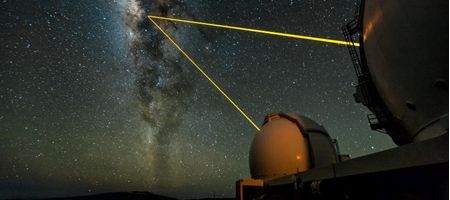A star has been discovered orbiting tightly round the massive black hole at the center of our Milky Way galaxy, making its circuit in just eleven and a half years.

The star, known as S0-102, could help astronomers discover whether Albert Einstein was right in his fundamental prediction of how black holes warp space and time.
It’s the second with a short orbit to be found in the region: S0-2 orbits in 16 years. Most have orbits of 60 years or longer.
“I’m extremely pleased to find two stars that orbit our galaxy’s supermassive black hole in much less than a human lifetime,” says Andrea Ghez of UCLA.
“It is the tango of S0-102 and S0-2 that will reveal the true geometry of space and time near a black hole for the first time. This measurement cannot be done with one star alone.”
Einstein’s theory of general relativity predicts that mass not only slows down the flow of time but also stretches or shrinks distances.
“The exciting thing about seeing stars go through their complete orbit is not only that you can prove that a black hole exists but you have the first opportunity to test fundamental physics using the motions of these stars,” says Ghez.
“Showing that it goes around in an ellipse provides the mass of the supermassive black hole, but if we can improve the precision of the measurements, we can see deviations from a perfect ellipse – which is the signature of general relativity.”
As the stars come to their closest approach – which for S0-2 will be in 2018 – their motion will be affected by the curvature of spacetime, and the light traveling from the stars to us will be distorted.
“The fact that we can find stars that are so close to the black hole is phenomenal,” says Ghez.
“Now it’s a whole new ballgame, in terms of the kinds of experiments we can do to understand how black holes grow over time, the role supermassive black holes play in the center of galaxies, and whether Einstein’s theory of general relativity is valid near a black hole, where this theory has never been tested before. It’s exciting to now have a means to open up this window.”






